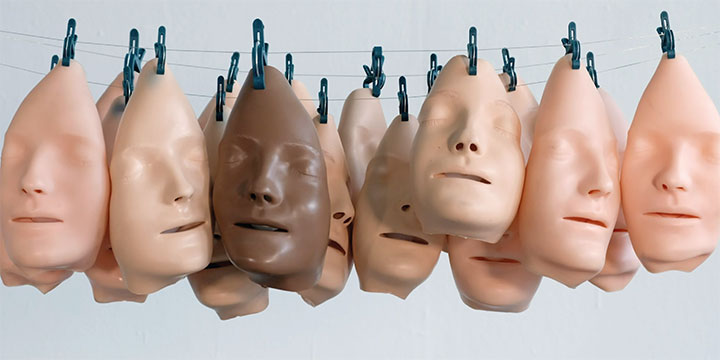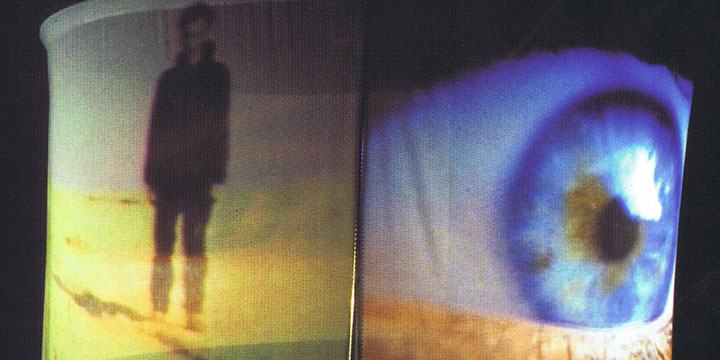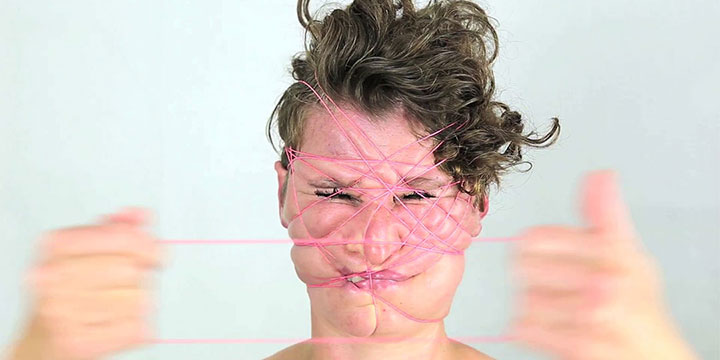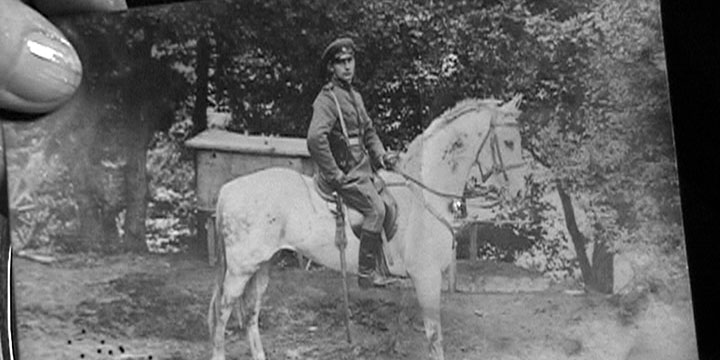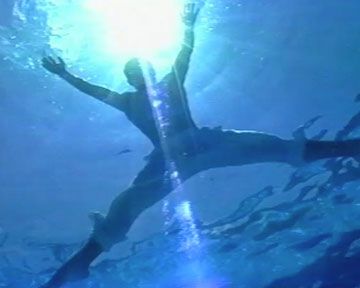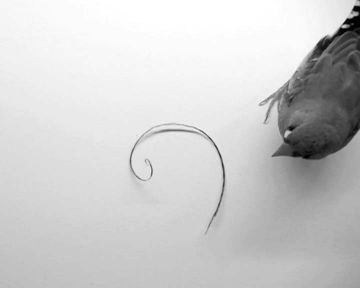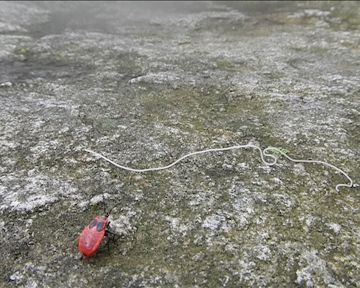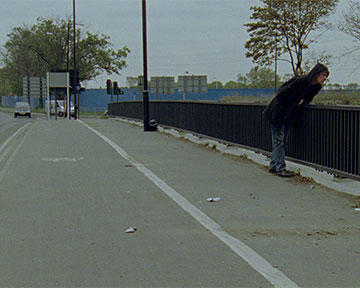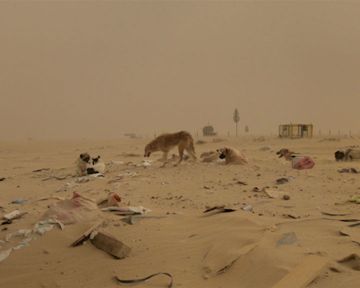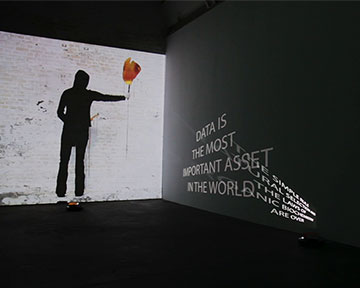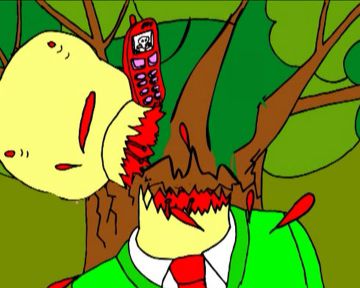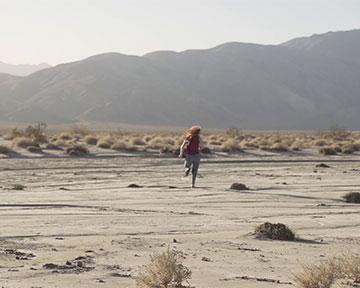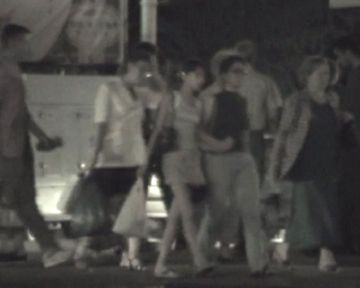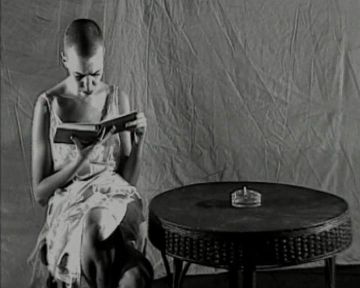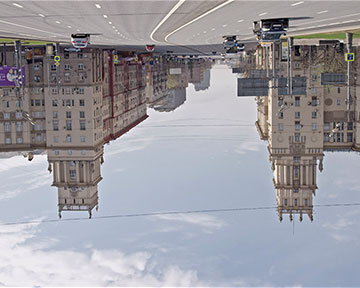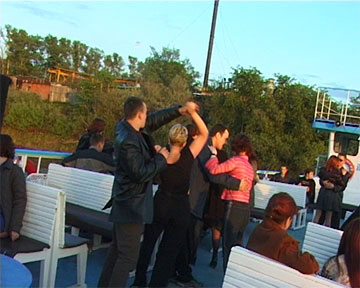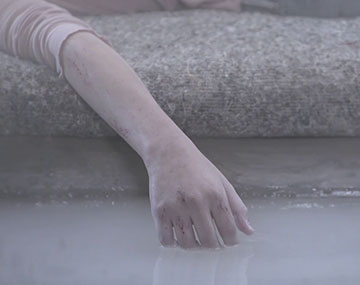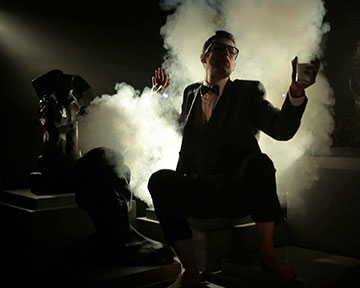The Fascination with the Motion Picture
Critics‘ Pick: Nicole Büsing and Heiko Klaas recommend video works featured at the LOOP Fair in Barcelona in November 2018
Barcelona.
At the end of November 2018 the 16th edition of the LOOP Fair took place in Barcelona. The fair, founded by the gallerists Emilio Álvarez and Carlos Durán, is specialized in artists’ films and videos and is internationally regarded as one of the most relevant meeting points for video professionals. The artistic director Carolina Ciuti, had succeeded in luring important figures of the international video scene to the Catalan capital for the three intensive Fair days embedded in the ten-day LOOP Festival.
The LOOP Fair Award 2018 was granted to the Galerie Iragui from Moscow, which has endeavoured for many years to make Russian conceptual and video art better known on the international level. At the LOOP Fair, the gallerist Ekatherina Iragui presented Olga Chernysheva’s 27-minute film “Steamboat Dionysius” from 2004. In serene images, the camera films two protagonists during a river trip with the pleasure steamer. Underlaid with melancholy, somewhat nostalgic music, this film guides us into the world of the post-Soviet people, beyond the cosmopolitan cities of Moscow and St. Petersburg and their internationally networked elites. We witness the protagonists performing a touchingly intimate dance or enjoying simple, traditional food and drink. What appears to be alien and unattainable for Olga Chernysheva’s protagonists, however, is the world outside. They have somehow become accustomed to this homelike river landscape, strewn with old monasteries and new industrial wastelands, thus settling for the modest amusements they can afford.
The girl acting in the eponymous 16-minute animation film, “The Girl”, produced by Hans Op de Beeck in 2017, seems equally strange and mysterious. The Amsterdam Galerie Ron Mandos presented this complex, large-scale production of the versatile Belgian artist, who also wrote the immersive music for the narrative film. A deathly pale, obviously injured teenage girl stands at the centre of the grotesque sequence of images leading the viewer into a dystopian model world full of nocturnal rain-drenched free-way bridges, forest clearings, dismal dumps and brownfields, and fog-shrouded landscapes of swamps and lakes. The work shifts between modern fairy tale, gloomy horror film and fantasy music video clip. “The Girl” stirred a great deal of attention on behalf of the professional audience at the LOOP Fair.
In stark contrast to this was the ca. 15-minute film “The God of the Labyrinth” by the London-based Japanese conceptual artist Yoi Kawakubo. Born and raised in Toledo, Spain, the Japanese artist had deconstructed a text by the Argentine author Jorge Luis Borges to then generate a new text from its elements, whose individual words he finally screened in the form of English type in rapid sequence. Via headphones, the viewer listens to the artist’s voice recorded both in Spanish and Japanese. Poetic language, a subtle approach to the well-familiar phenomenon of being “lost-in-translation” along with the cognitive completion of blanks characterize this formally and intellectually challenging work presented by the London gallery Yamamoto Keiko Rocheix.
In the 29-minute video “Venom – A Diva in Exile” (2016) by the Hungarian media artist Péter Forgács, born 1950, everything revolves around Katalin Karády – once regarded as the country’s greatest film diva. The communist regime, however, stopped giving her roles from one day to the next. Hence, in 1951 , she emigrated to Brazil and never again performed as an actress until her death in 1990. Péter Forgács portrays her path into the tropical exile in the form of a collage composed of movie images fading over in a slow-motion aesthetic along with photographs, film stills and documents. Appearing repeatedly is also the author Zsófia Bán who had written a short story inspired by Katalin Karády’s fate, from which she reads individual passages. Some of the found-footage material derives from films which the author’s father had made in Brazil in the 1950s. “Venom – A Diva in Exile” is a an equally sensitive and Kafkaesque quest along the traces of the iconic Hungarian Femme Fatale and everyday heroine who, during Hungary’s occupation by the Nazi troops, could save many of her Jewish friends from the concentration camp. The film was presented by the Budapest Ani Molnár Gallery and received the LOOP Acquisition Award. It is now entering the collection of the Barcelona Museum of Contemporary Art (MACBA) as a loan from the LOOP collection.
The crowd favourite at the LOOP Fair was undoubtedly the ca. ten-minute, ironic video “The Curator”, a humoristic persiflage on the vanities of the art world. At the core of the suggestive satire in the style of a Hollywood trailer stands an overly self-assured do-it-yourself curator, who marvellously fails in the end. The video by the Israeli artist Shahar Marcus was offered by the Braverman Gallery from Tel Aviv in an edition of six and was sold several times.
Another film from Israel gained much attention: Tamir Zadok's complex film narrative “Art Undercover” from 2017. In the ca. 30-minute video the Israeli protagonist, who speaks Arabic fluently, undertakes a research trip to Egypt. His intention is to track down works of the artist Charduval, presumably a Frenchman who had been highly successful in Cairo during the 20th century. However, in the course of the story, the latter turns out to be Shlomo Choen Abravenel. Abravanel was a founding member of the Israeli secret service Mossad. The complex detective story contains plenty of subtle references to the political ties and connections in the Middle East, including the artist’s inner strife of being torn between the Arab and Jewish identity and the enmeshments of the art business in international relations. The Rosenfeld Gallery from Tel Aviv presented this political-humoristic video in their space curated by Maya Frenkel Tene.
The video work “Recorder”, created in 2010 by the Islandic artist Sigurður Guðjónsson, was shown at BERG Contemporary from Reykjavik and also attracted a considerable number of viewers. In the loop one sees an old cine projector with two reels spinning incessantly above a water basin in an old warehouse. The insistent sound of drops falling into water and the mechanical sound of rotating film reels merge to form a musical flow that corresponds to both the visual aesthetics and sombre mood of the images. Sigurður Guðjónsson, born in 1975, is not only known in the experimental art scene, but has also presented his works in an international context in many exhibitions and at festivals.
One of the most innovative videos at the LOOP Fair was “Astronaut Doll”, created in 2017 by the Chinese artist Tang Chau. A marionette-like figure in a space suit wanders about aimlessly in nocturnal Shanghai; the figure roams in a dystopian setting seemingly without any social ties, without backing, without work. An impressive portrait of the nomadic metropolitan no longer integrated in the system. Tang Chau was born in 1990 in Hunan and works in the media video, photography, theatre and performance. He is represented by the Vanguard Gallery in Shanghai.
The Galerie Reinthaler from Vienna presented Lukas Marxt’s six-and-a-half-minute video work “Circular Inscription” from 2016. The setting is the Mojave Desert in California or, more precisely, El Mirage Dry Lake. An old American cruiser with a noisy engine is driving in perpetual circles in the dry and dusty desert, leaving behind tire marks in the sand. Here, the artist references the well-known land art work “Spiral Jetty” by Robert Smithson from the 1960s. In the past decades, the impressive landscape of the Mojave Desert has repeatedly served as a backdrop for Hollywood productions and advertising clips, especially for car advertising.
In the film “Away”, the Iranian artist Parisa Aminolahi tells the story of a young couple emigrating from Iran to the Netherlands. The contrast between a colourful, warm-hearted world in the Middle East and the unhospitable, Calvinistic Holland is described from the perspective of the young woman. The woman, thrown back on herself and constrained to the house, falls into a severe depression - visualized in emphatic, poetic pictures - and thus withdraws into a hallucinatory dreamworld. Parisa Aminolahi was born in Teheran in 1978 and has lived in the Netherlands since 2008. Her works have been shown internationally and are generally concerned with issues of exile, displacement and childhood traumata. She is represented by the Ag Galerie in Teheran.
In the 20-minute video “Not I”, created in 2018, we see an isolated woman’s mouth speaking non-stop. The voice, however, does not belong to the woman who is speaking, and also what she is saying is not coming from her. This irritating discrepancy is in turn reflected by the video’s title. The work by Lúa Coderch from Peru, born in 1985, is based on a theatre piece by Samuel Beckett from 1972, which was staged at the Forum Theater in the Lincoln Center in New York. At the LOOP Fair, it was presented by àngels barcelona.
Altogether around eleven-and-a-half hours of video art were on view at the LOOP Fair 2018 – an intensive load. Owing to the comfortable seating in the hotel rooms and the diversified programme of talks, this trade fair for video art is nonetheless a well-consumable format for insiders, friends and discoverers of the electronic medium.
Nicole Büsing and Heiko Klaas, 16 Jan 2019
